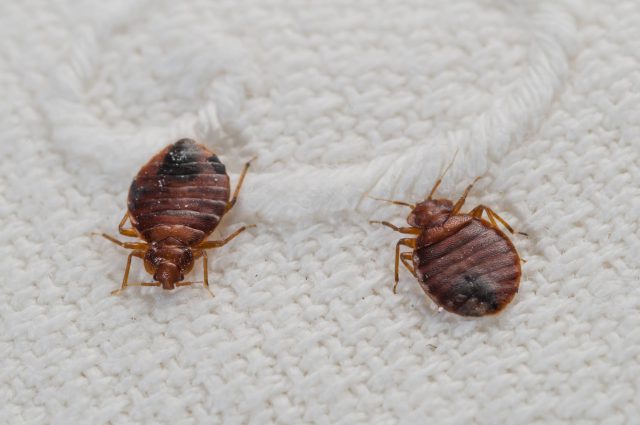Bed bugs are developing a resistance to common insecticides and it’s making them much harder to kill, a new study says.

According to researchers at Purdue University, bed bugs have already shown resistance to several other insecticides, including the commonly-used deltamethrin. However, bifenthrin and chlorfenapyr can now be added onto that growing list.
(Bifenthrin is a chemical that attacks the nervous systems of insects, while chlorfenapyr is a chemical that targets the mitochondria of cells, Time reports.)
READ MORE: What should you do if your home is infested with bed bugs?
“In the past, bed bugs have repeatedly shown the ability to develop resistance to products overly relied upon for their control,” co-author Ameya Gondhalekar says in a statement. “The findings of the current study also show similar trends in regard to chlorfenapyr and bifenthrin resistance development in bed bugs.”
Researchers say it is this resistance against commonly-used insecticides that is causing the return of these insects over the last decade.
To find this out, researchers collected 10 bed-bug populations from Ohio, New Jersey, Indiana, Virginia, Tennessee, Washington and DC. They exposed the bugs to the two chemicals for a week.
At the end, researchers found a reduced susceptibility to five of the collected bed-bug populations and more than 25 per cent of the bed bugs survived.
Three populations also showed a resistance to chlorfenapyr.
The research team says this study shows that more measures need to be taken in fighting bed bugs, and that people cannot solely rely upon insecticides if they want to be successful in eliminating the insects in the long term.
“There is a plethora of research that has shown that if insecticides are integrated with additional control measures such as vacuuming, steam or heat, mattress encasements, traps and desiccant dusts, effective bed-bug control can be accomplished, and theoretically, this should reduce the risk of resistance build-up in populations,” Gondhalekar says.
It is important to note that these two chemicals are still effective towards other bed-bug populations and are still important in pest management, but they should be used sparingly, Gondhalekar tells Time.
READ MORE: How do moving companies make sure your furniture remains bed bug-free?
- Some fixed mortgage rates are up despite hints of Bank of Canada cuts. Why?
- Health task force blasted over ‘dangerous guidance’ for cancer screenings
- Lynx Air says passenger refunds will hurt investors because of defiant contractor
- As Tim Hortons tests plastic-free lids, how eco-friendly are alternatives?
The study was published in the Journal of Economic Entomology.
According to the Centers for Disease Control and Prevention (CDC), bed bugs have traditionally been seen in developing countries. However, they have been spreading fast across the U.S., Canada, U.K. and other parts of Europe. Their presence is not determined by the cleanliness of living conditions, meaning they can be found in any type of dwelling – including five-star hotels and resorts.
They are not known to spread disease but their bite can cause itching, allergic reactions or a secondary skin infection.
A bite mark can take up to 14 days to develop in some people, however, there are other clues that may allude to an infestation:
- The presence of bed bugs’ exoskeletons after moulting
- Bed bugs present in the fold of the mattresses and sheets
- Rusty-coloured blood spots due to their blood-filled fecal matter
- A sweet musty odor







Comments